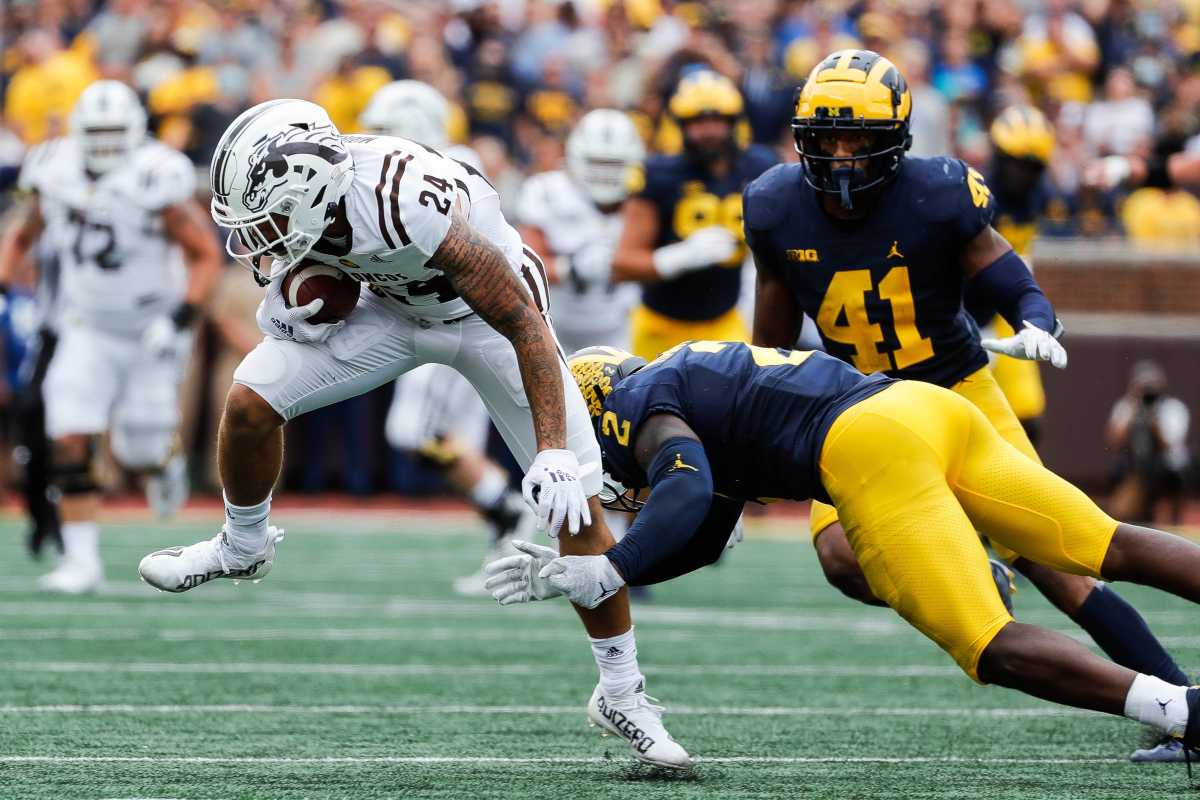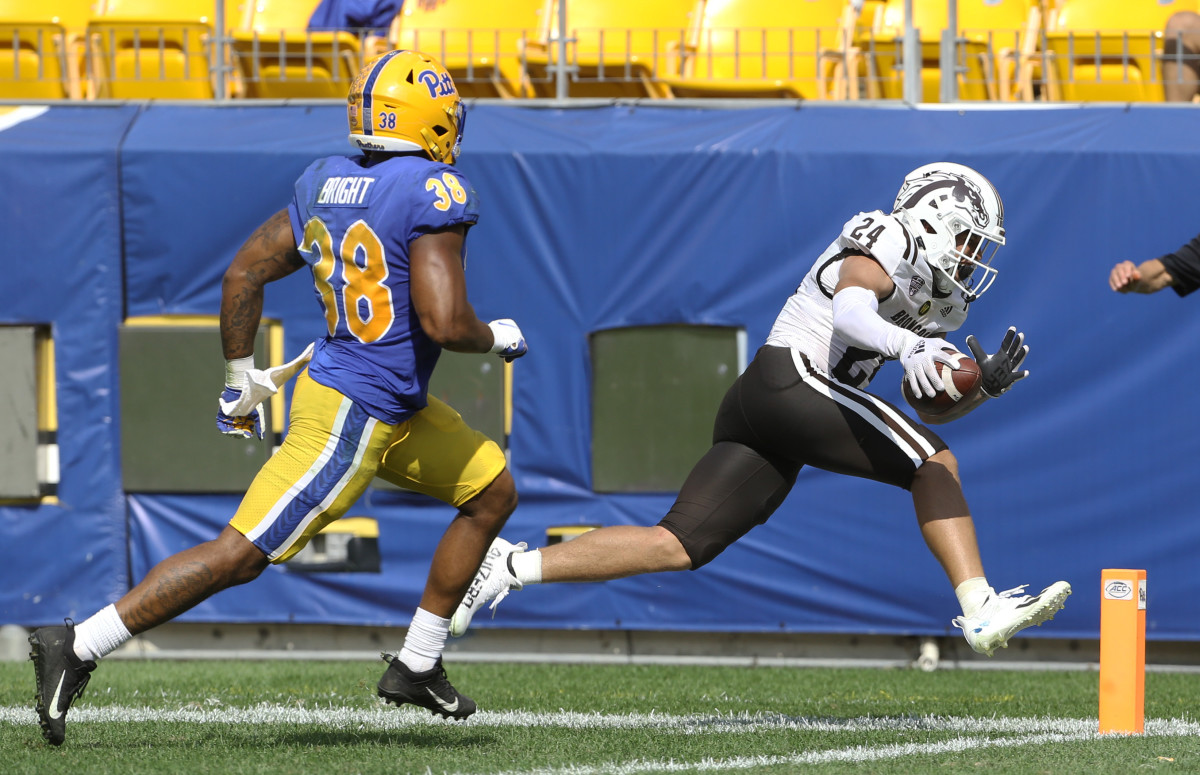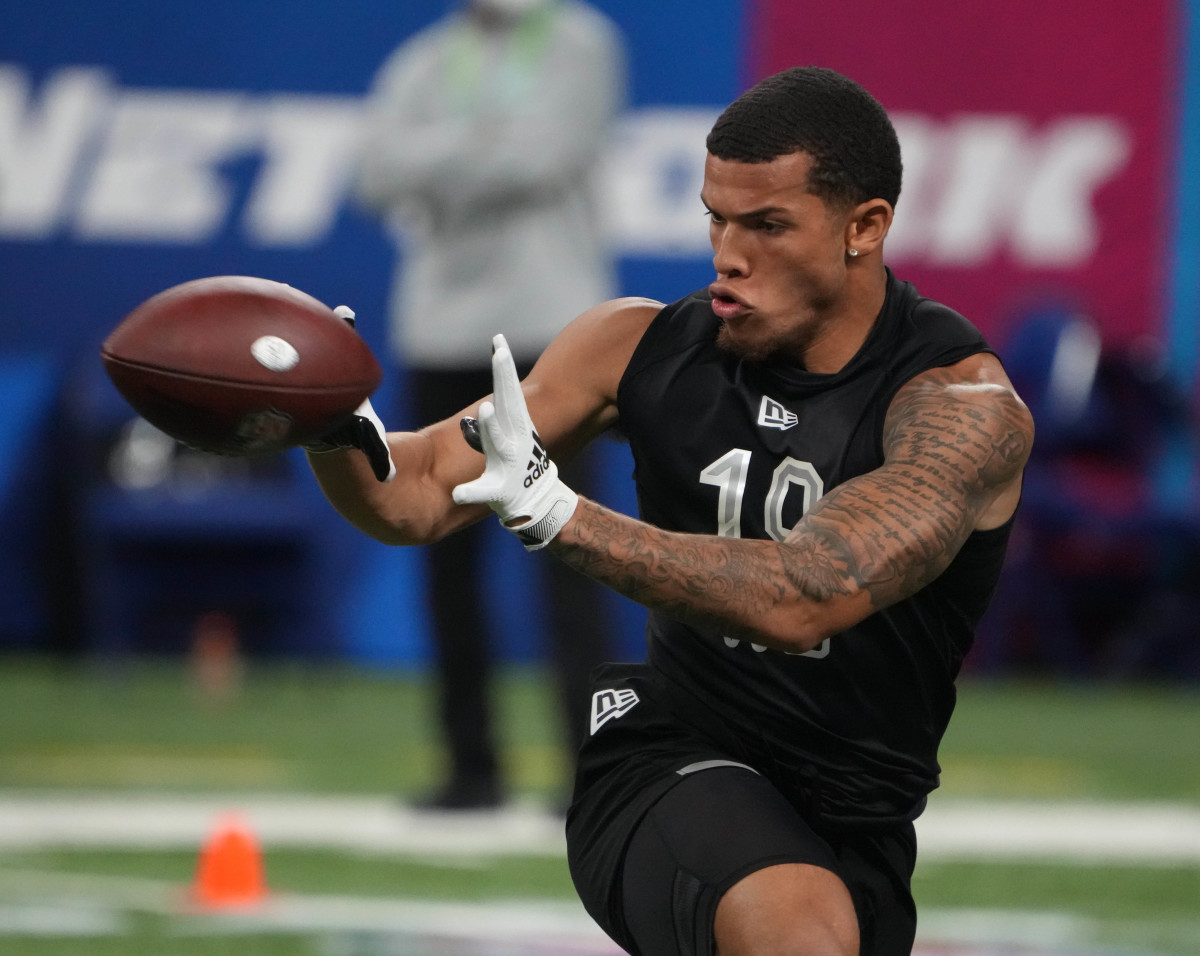How Long Will Skyy Moore's MAC to NFL Transition Take?
In considering his one-hour documentary chronicling his work leading up to a life-changing 2022 NFL Draft, it’s difficult to decipher which one Skyy Moore does quicker: maneuvering in and out of his routes, or becoming an easy-to-root-for fan favorite.
From recounting the stories of how he defied the advice suggesting he return to school to the grueling journey of rising from a Day Three prospect to one with Day One potential, the new Kansas City Chiefs wide receiver’s road to the NFL personifies the term “underdog.” Beneath the emotional plot, though, there’s a phrase that comes up regularly, either by him or through those supporting him: Rookie of the Year.

Whether they admit it externally or not is a different story; any NFL rookie with even an iota of confidence in his abilities at least considers the idea. For Moore, a three-year receiver out of Western Michigan, the idea fits snugly into that underdog story. On the other side of that is history. The last AP Offensive Rookie of the Year to attend a non-Power Five school? Ben Roethlisberger in 2003. The last non-quarterback? Randy Moss of Marshall in 1998.
In totality, whether the talented wideout wins an award or not isn’t overwhelmingly relevant. It does, however, highlight a question that frequented his Draft profiles: Moore excelled against what was referred to as “lesser competition” in the Mid-American Conference. So, how quickly does he process the steep learning curve at the NFL level?
History is littered with players on each side of the spectrum in regards to that competition phenomenon. To get an idea, it felt important to look through every Mid-American Conference wide receiver taken in the NFL Draft, dating back to Moss’s arrival in 1998. To save everyone’s time, the one caveat was that the receiver had to have totaled at least 10 receptions in either year one or year two. Within it, there’s a sample size of 17 different receivers.

This goes without mentioning some of the undrafted MAC wideouts that turned out to be excellent cogs in offensive machines around the league — think Lance Moore of the Drew Brees-led New Orleans Saints, Andrew Hawkins of the Cincinnati Bengals and Cleveland Browns, etc. — but the results are positive nonetheless. Of the 17 receivers to meet the criteria:
- Six of them amassed 400-plus yards in their first season
- Fifteen of the 17 saw jumps in receptions from year one to year two
- Nine of the 17 went on to reach 600-plus yards in either of their first two seasons
It’s also worth noting the variance in when receivers had their “most productive” games (in this case, we used combined targets + receptions + yards + touchdowns). Excluding K.J. Osborn, only a special teams regular in his rookie season, eight of the 16 MAC receivers had their best games between Week 1 and Week 8.
With Moore, it’s much easier to envision him rising into the upper echelon of the overall group. For one, it shouldn’t be understated that he will be sharing the field with not only one of the NFL’s most nuanced play-callers but also, arguably, the game’s best distributor of the football. It’s as receiver-friendly as it gets for his playstyle. The general consensus is also that Moore — though he has produced all over the field — profiles best in the slot. About 30% of his snaps last season came in the slot, and according to The Analyst, his “open percentage” jumped up a full ten% (from 73.8 to 84.4) in those situations.

It’s unclear if the sum of the Chiefs’ parts equals the six-time Pro Bowler they parted ways with this offseason but with his hands and considerable ability to get off the line, Moore will have a chance to be a part of a versatile offensive ecosystem from the jump. His familiarity with RPO sets should also be of help. The comparisons to Julian Edelman, Steve Smith Sr. and — from a profile standpoint — Greg Jennings (another Western Michigan alma mater tie) make sense.
Moore’s two-catch, 22-yard performance against the University of Michigan is one that analysts have focused on, largely because it was by far the stiffest competition Western Michigan played. (It’s often overlooked that he got injured in the first half of this game.) It’s important to remember that just one week later, Moore played another Power Five school in Pittsburgh and executed to the tune of 11 catches, 124 yards and a touchdown in an upset victory.
With that in mind, if there were ever a situation for the “lack of consistent NFL-caliber competition” narrative to fall face-first, it would be here in an Andy Reid-led offense. Factoring in Mecole Hardman’s hamstring setback, Patrick Mahomes’s success in balancing touches and the overall newness to this year’s receiving corps (the Chiefs set a DYAR record in this regard this offseason) the opportunity for Moore to over-exceed in year one feels plausible.
In a season in which Las Vegas, Los Angeles, and Denver could view the Chiefs at their most vulnerable, it’ll be of great irony that this Bronco — this Western Michigan Bronco — could prove vital in ensuring that the Chiefs Kingdom retains its power in the AFC.
